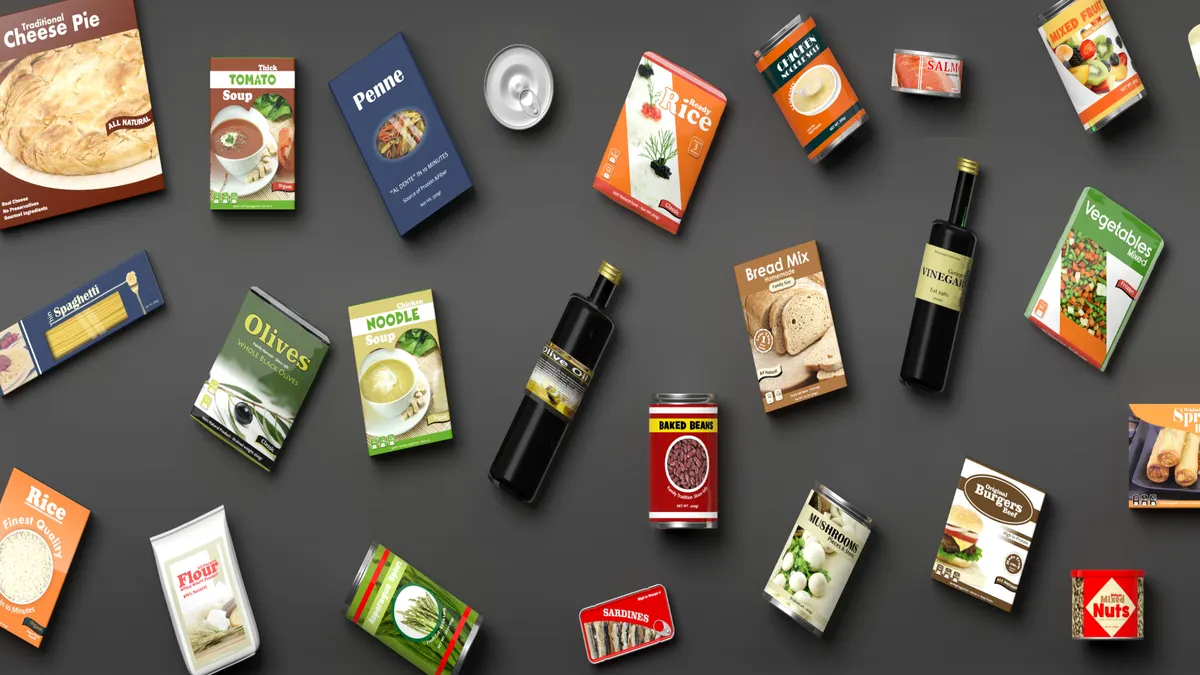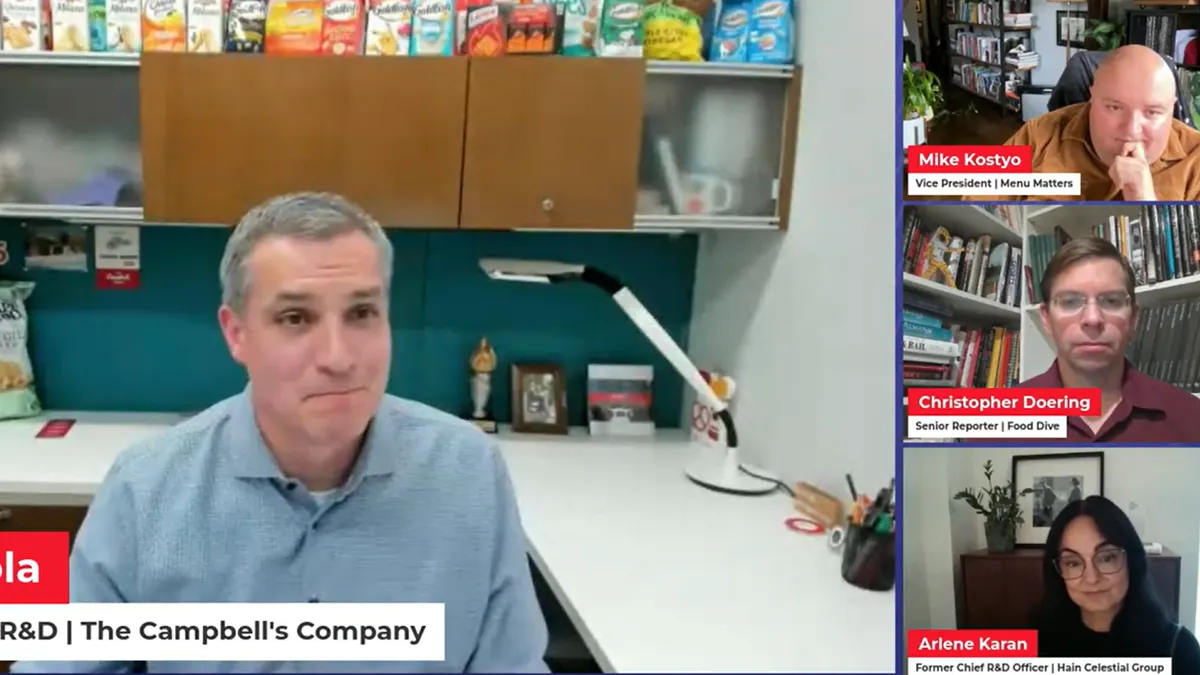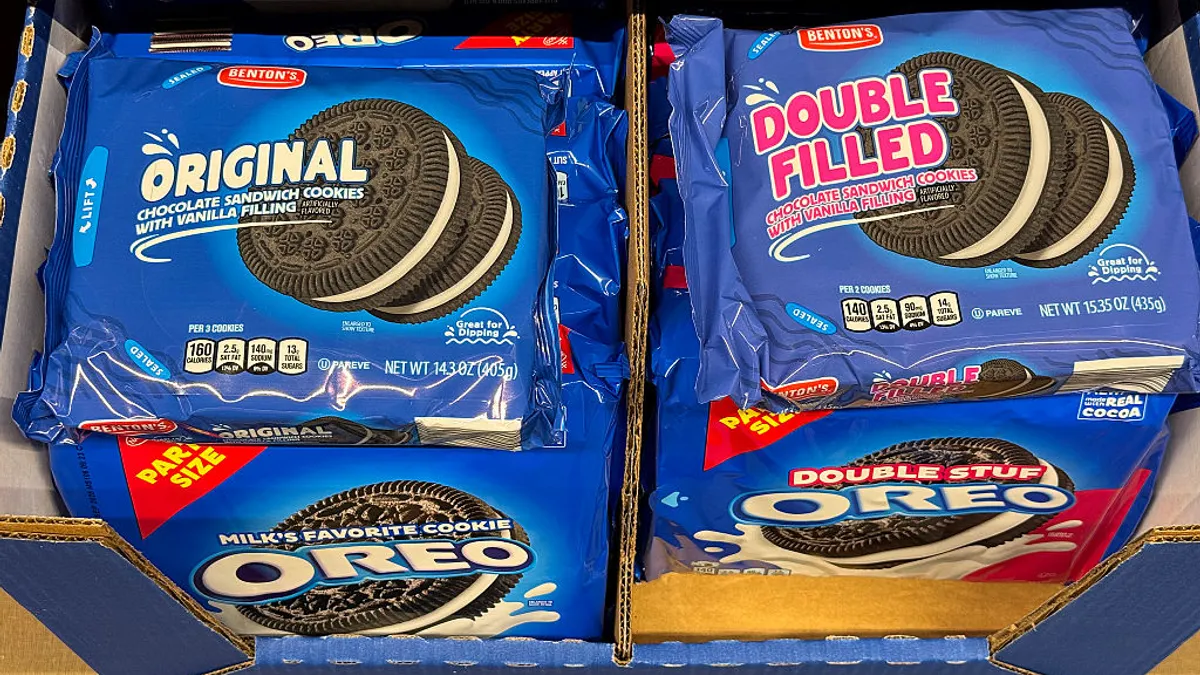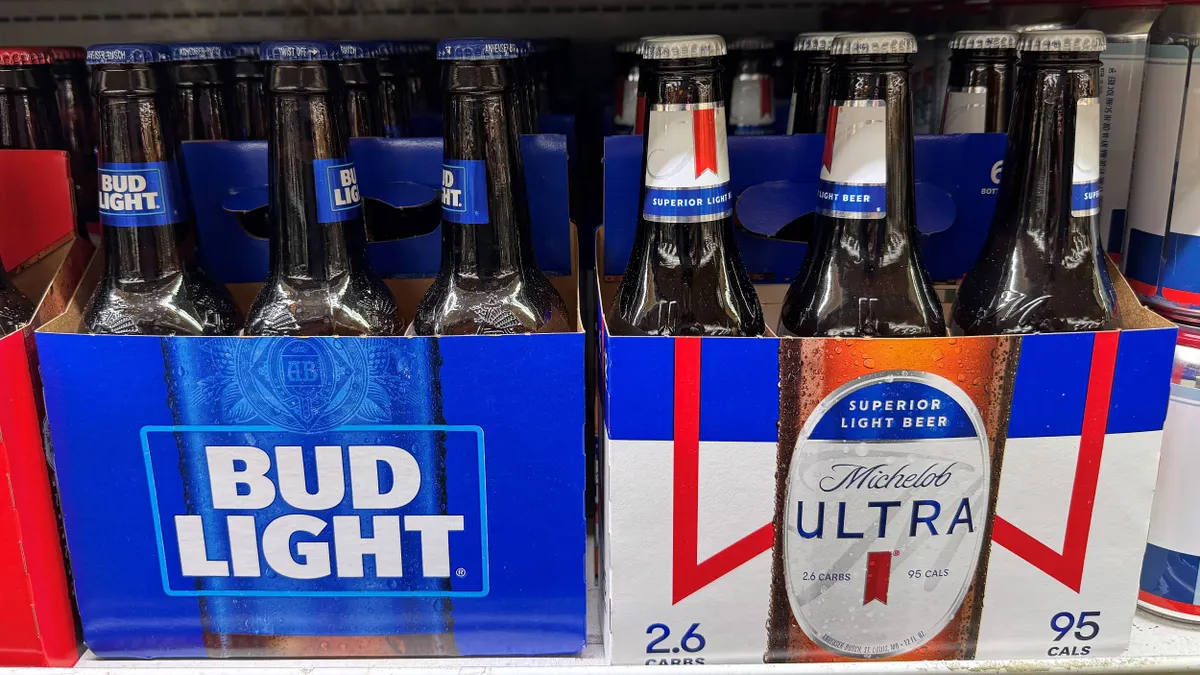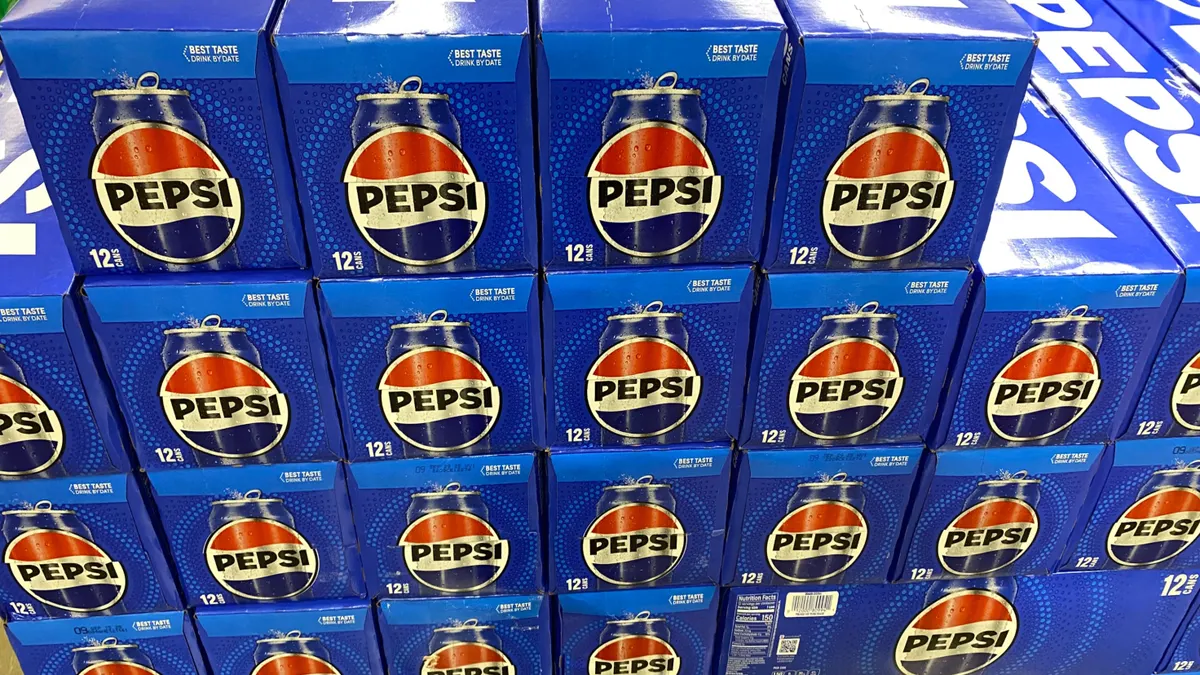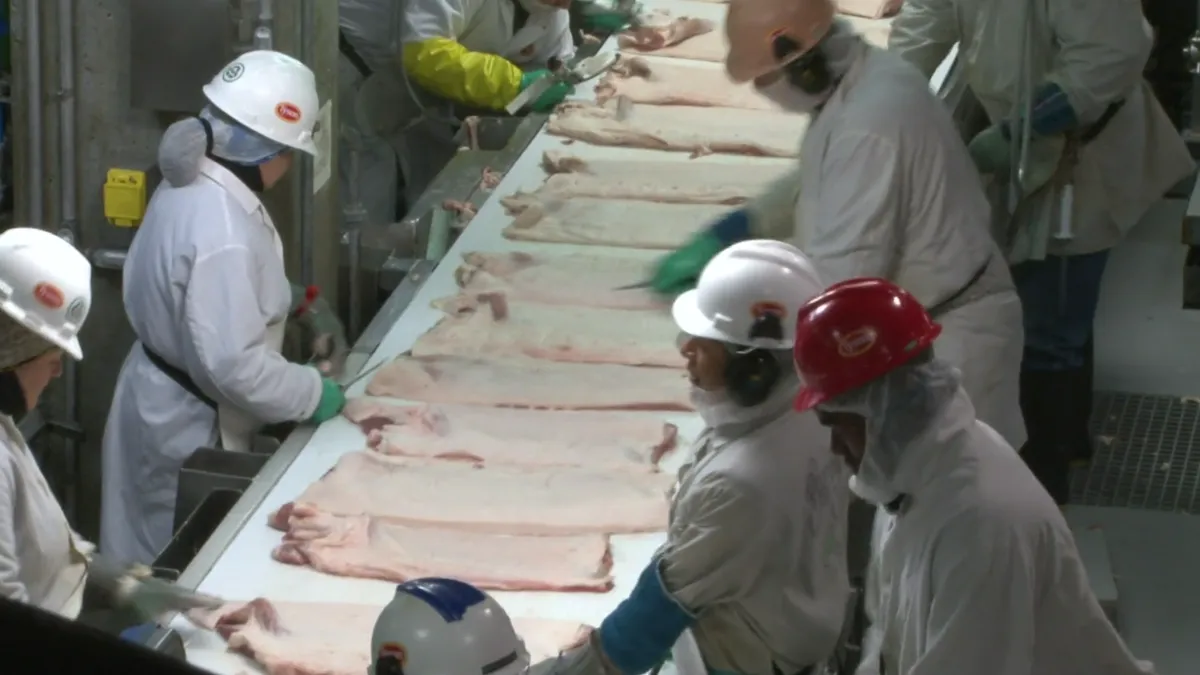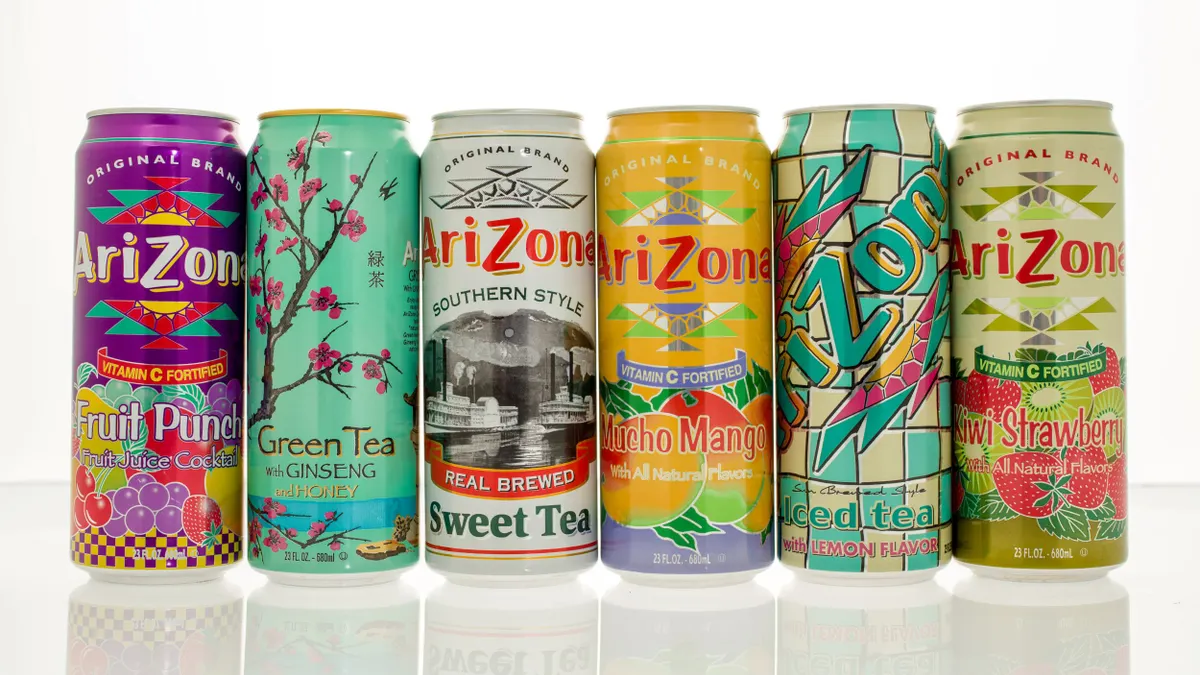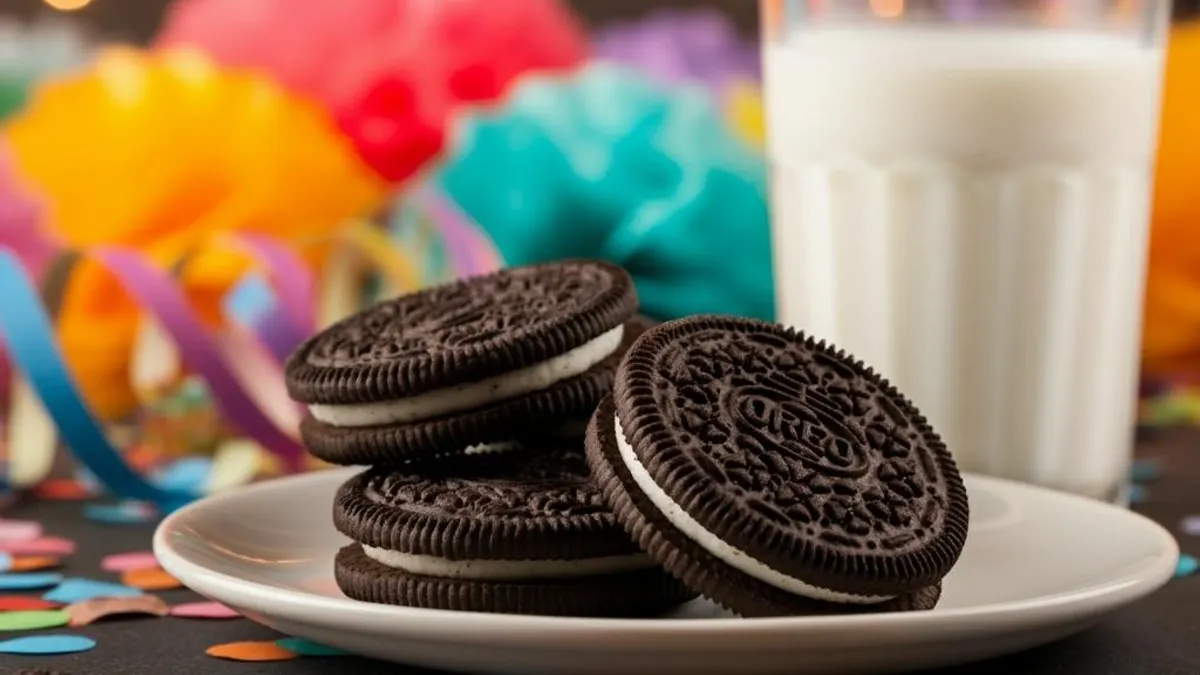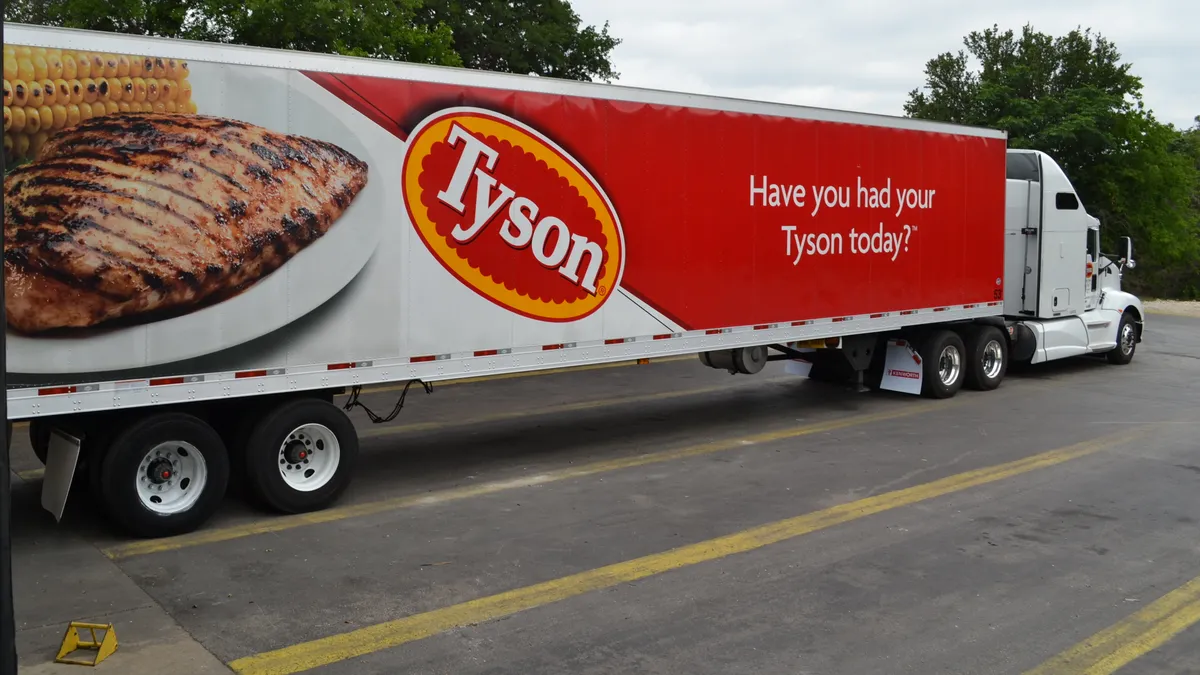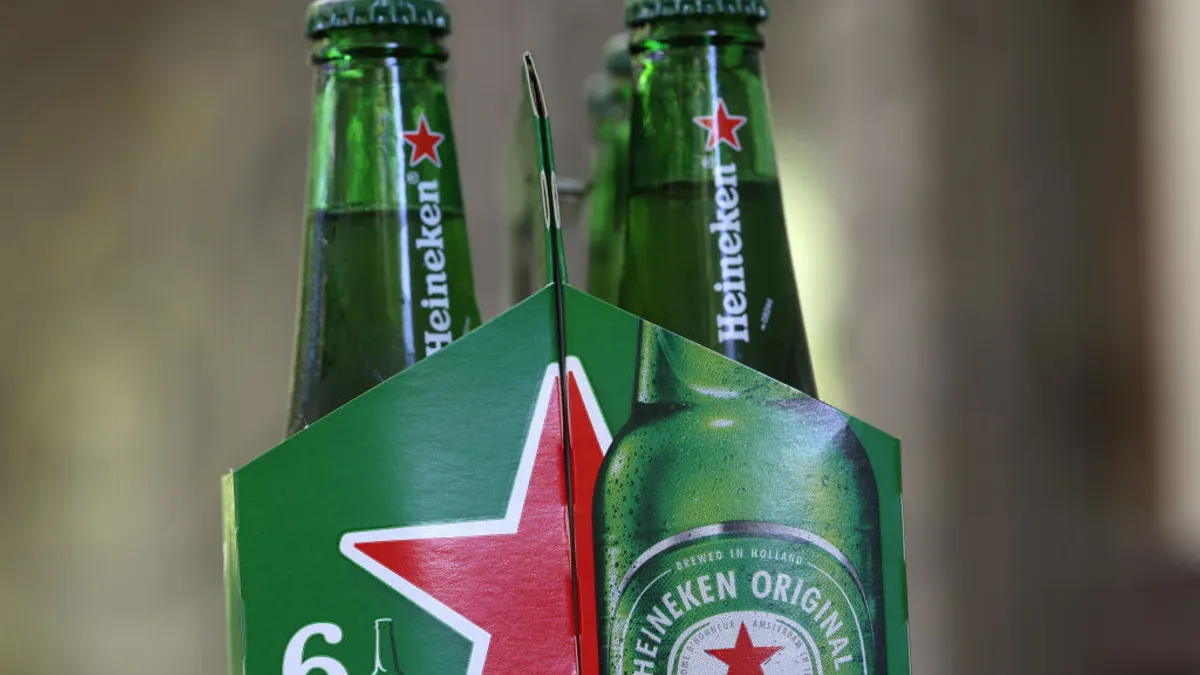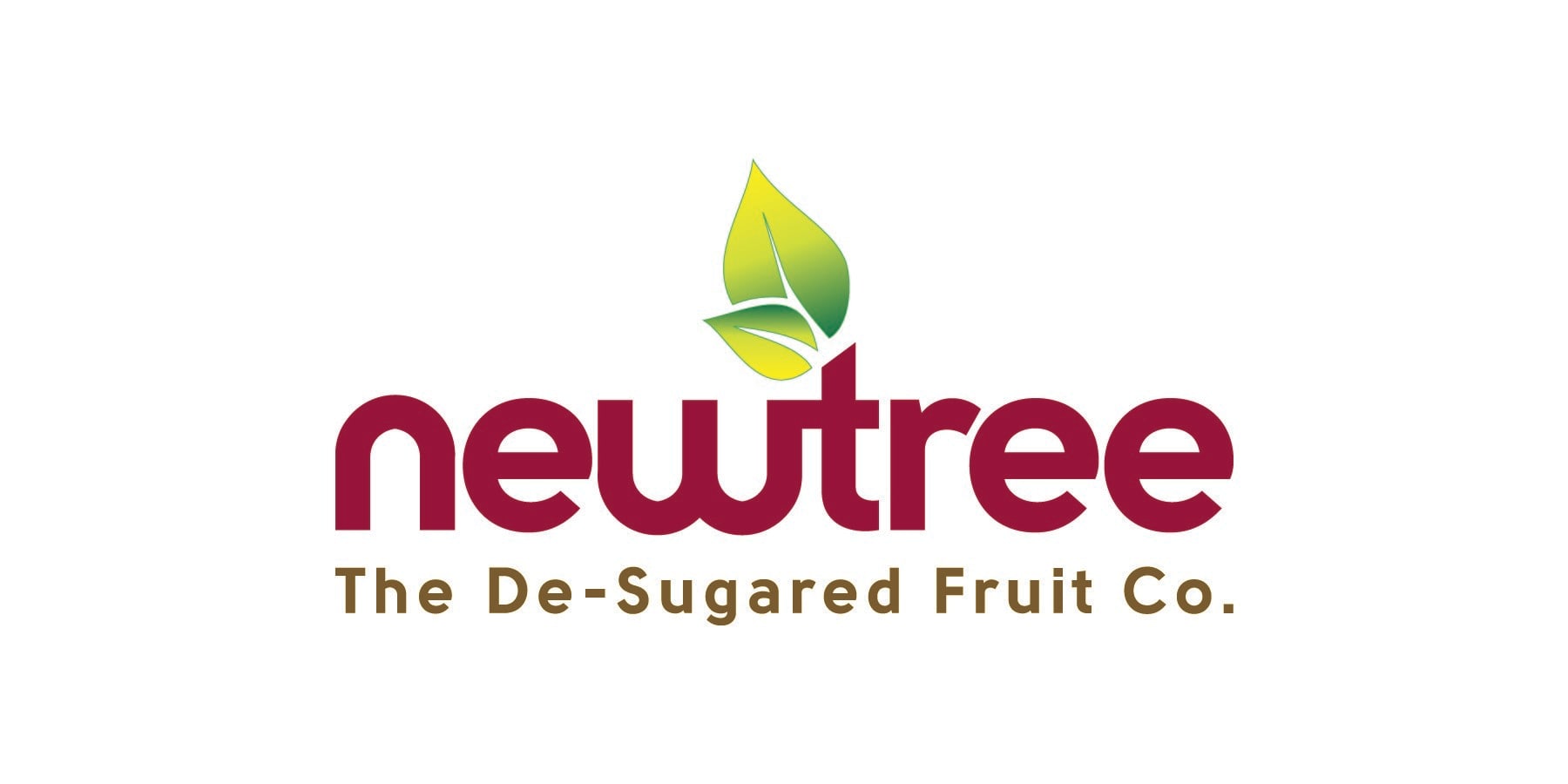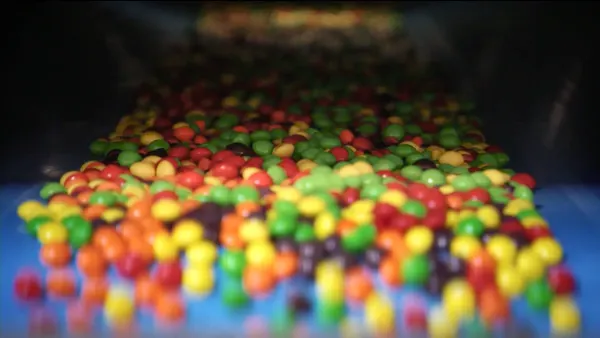When Casey Keller took the helm as CEO of Green Giant owner B&G Foods four years ago, beans, taco shells and pasta sauces weren’t the only things on his mind.
The CPG veteran wasted little time digging into the 130-year-old company’s packaging, an area he identified as an “opportunity to improve” for the manufacturer of Crisco shortening and Dash seasonings.
“Your primary communication is on the shelf with the consumers,” said Keller, who has worked in the CPG space for 30 years. They are “making a decision in a split second and if you don’t understand how your packaging works in the context of all the choices that they are facing, you’re lost.”
For food and beverage manufacturers, such as B&G, packaging is a valuable tool to influence purchasing decisions, strengthen customer loyalty, increase sales and keep the product fresh.
At least 80% of consumers last year said they bought a new product because the packaging caught their attention, according to data analytics firm BusinessDasher, and nearly three-quarters added that packaging can influence their purchasing decisions.
Roughly half of those surveyed said they switched brands because of the packaging. Companies, not surprisingly, also benefited, with 30% reporting an uptick in revenue after improving product packaging.
However, despite the favorable data, packaging has long been an afterthought in the food and beverage sector until recently.
B&G is among the companies that have put renewed thought into their packaging, spending big money to thoroughly test proposed alterations in real-world settings to see how the changes would resonate with consumers.
“We might have been a little bit more ‘seat of the pants’ at B&G” when it came to packaging in the past, Keller said. “I think we need to have a little bit more discipline, making sure that our packaging is a priority.”
A scramble to catch up
During the COVID-19 pandemic, manufacturers focused most of their attention on getting products to market and navigating disruptions in the supply chain. Competition wasn’t as fierce since companies were focused on supply and consumers were stockpiling what they could.
But as the impact of the pandemic eased and the flow of products returned to normal, shoppers experienced a surge in inflation that led them to cut back on what and how much they bought. In a cutthroat industry where up to 80% of new grocery store products fail in their first year, CPG companies, more than ever, have obsessed over ways to attract and retain consumers.
Data shows shoppers value packaging that communicates the product’s benefits, ingredients and value, helping them make quicker and more confident decisions.
In addition, other studies show people are more likely to purchase a product if the packaging is easy to open, reseal and store; is viewed as preserving freshness and safety; and uses premium materials and a design that enhances the perceived quality of what’s inside.
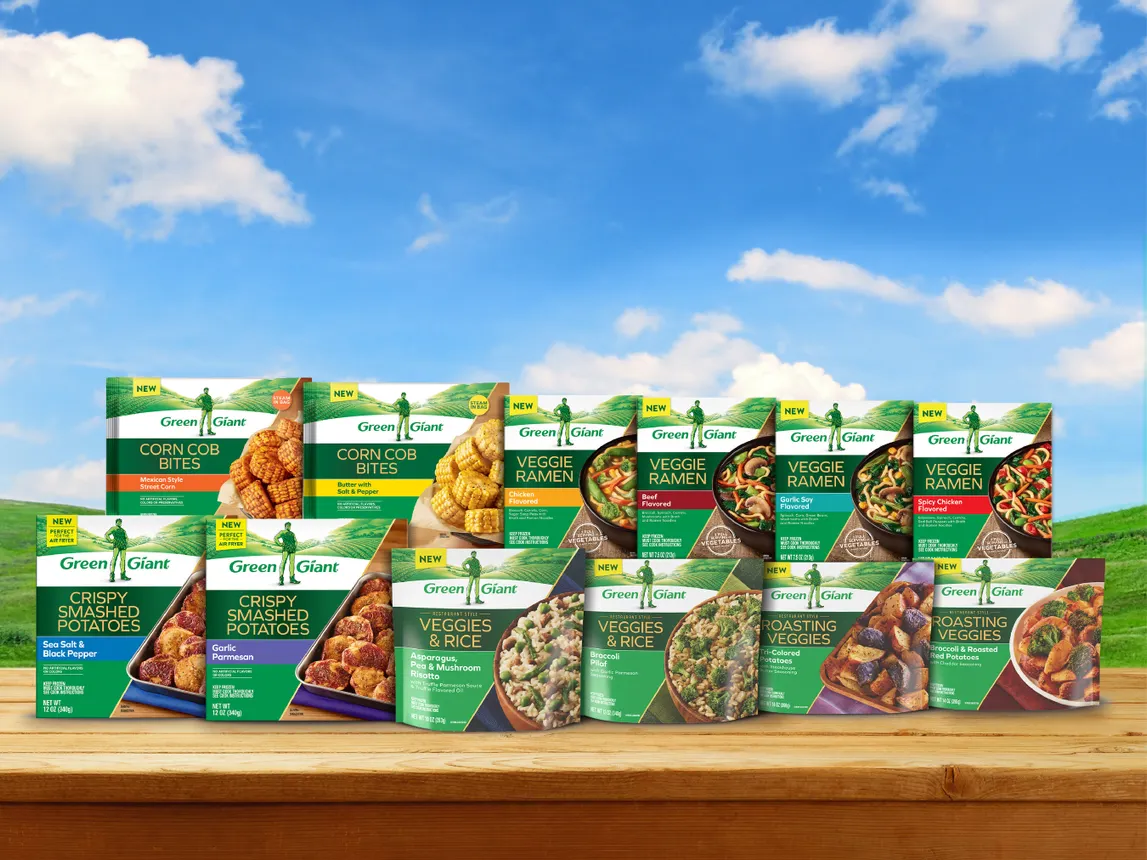
While executives in the food and beverage sector are waking up to the importance of packaging to drive sales, they need to play significant catch-up when it comes to investment.
Sean Bisceglia, CEO of brand packaging and design firm PV&COHO, estimated that about five times more money is spent on perfecting the taste, smell, texture and appearance of the food or liquid than the actual container, bag, or box on the shelf.
“[Packaging development is] decades behind, really antiquated,” he said.
Chris Rowe, a former Mars Wrigley and PepsiCo executive who has been involved with packaging for much of his career, noted he often educates business leaders and marketers on the importance of packaging in growing a product’s sales, using his work with Extra gum and Gatorade as examples.
A decade ago, Rowe helped Mars Wrigley develop new packaging for its Extra mega-pack that included 35 pieces of gum to reduce the chance a person runs out. The food maker — which developed more than 30 prototypes — found customers wanted a recyclable plastic container they believed would keep the unchewed gum fresh and organized. Shoppers also wanted to feel and hear the packaging close securely with an auditory “click.”
The new packaging, which hit shelves in 2016 after about a year of development, proved to be a success, becoming the top-selling gum product at Walmart within 12 months of its launch.
“There’s sometimes just a lack of fundamental understanding [among executives] of the role that packaging plays,” said Rowe, who now uses his more than 30 years of experience in the CPG space to advise companies. “You would think these people, coming through business schools, would have gotten educated on these things. It’s hard to understand why it requires so much upskilling and education.”
Sending a message
Businesses today are facing increased pressure from consumers, shareholders and environmental groups to make their products more sustainable, according to Bisceglia. A key part of that starts with packaging.
As companies spend time and money to make their packaging more environmentally friendly, several are choosing to overhaul a brand's colors, design and messaging at the same time.
“We spend hundreds of millions of dollars on what’s inside the packaging, and [packaging was viewed as] the redheaded stepchild,” Bisceglia said. “Now that the demand is there [from] the clients, we can’t ignore it anymore.”
At Slim Jim maker Conagra Brands, top executives, including CEO Sean Connolly, are involved in packaging throughout the product development process. Employees handling the graphics and food creation work side by side.
Bob Nolan, the company’s senior vice president of demand science, acknowledged that Conagra was “just like every other company” where packaging was largely an “afterthought” until about a decade ago.
“We’ve had screw ups here in the past, in my early days here, so we knew we had to build a better discipline on this,” he said.
Today, the Healthy Choice manufacturer wades through reams of data and gathers insight from behavior scientists and other experts to better understand how people buy food, what sticks in their memory and how they make a decision.
Packaging “is the holy grail in communicating what you want” to the consumer. “If they’re not picking [the product] off the shelf, it almost doesn’t matter what's inside."

Jamie Berle
Director of brand marketing, Suja Life
With 95% of purchasing decisions made on autopilot, Nolan said packaging is crucial for grabbing consumers' attention or convincing them to pay more for premium ingredients or products.
In 2017, Conagra launched under its Banquet frozen meals banner a new product called Mega, which included larger portions of everything from macaroni and cheese to country-fried steak. Mega costs nearly three times more than the traditional Banquet frozen meal, which is commonly associated with its low price point.
“We knew the graphics had to do a lot of heavy lifting [to convince consumers] on why should I pay more for this,” Nolan recalled.
To attract and convince shoppers, Conagra made the word “Mega” larger in size compared to “Banquet” and switched to a black color on the box rather than the traditional red.
The amount of protein per serving was prominently displayed in the upper right corner, tapping into consumer demand for the popular nutrient. And instead of a wider-angle shot showing the food inside the box, Conagra chose to highlight the meal up close, with chicken and vegetables oozing out of a pot pie or cheese melting down the side of a bacon cheddar patty.
Mega sales have delivered “exceptional growth” for Conagra, according to Nolan, with early success for the brand prompting the Chicago company to invest more into the offering and launch additional products.
While packaging changes are essential to communicating messages such as value, health or sustainability, companies also need to ensure they're not going overboard.
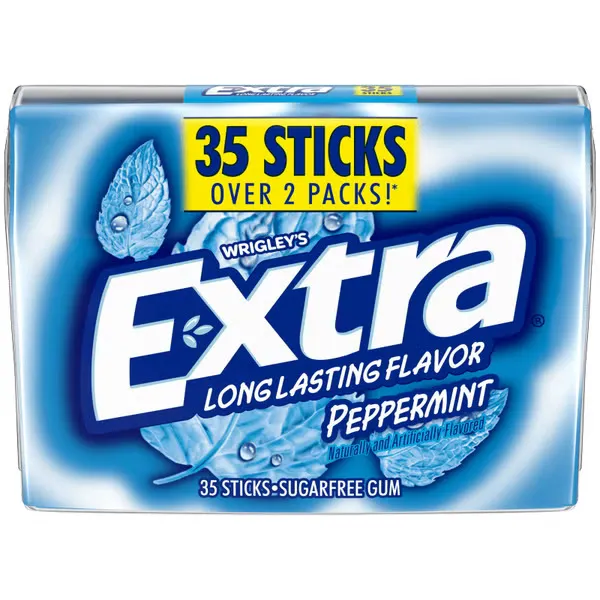
Suja Life, a maker of cold-pressed juices and shots, refreshed the packaging last year even though sales were growing after finding consumers were confused and overwhelmed with the product's ingredients, health benefits and taste.
Packaging “is the holy grail in communicating what you want” to the consumer, Jamie Berle, director of brand marketing at Suja Life, said. “If they’re not picking [the product] off the shelf, it almost doesn’t matter what's inside."
Executives updated Suja’s packaging to list fruit and juice ingredients on the front of the label rather than requiring the shopper to rotate the bottle to find them.
Suja also prominently displayed each drink's functional attributes, such as gut health or immunity. It also added a so-called "greens meter," providing shoppers with a little thermometer that indicated the taste profile a person could expect, such as earthy or sweet.
The overhaul, part of a total rebrand that included a new logo and marketing campaign, has paid off. Since last September, Suja has seen double-digit growth, driven by gains in both distribution and velocity.
“There’s always a risk when you change the packaging, especially to that noticeable of a level,” Berle said. “We did a lot of research. That’s how we minimize the risk.”
When packaging changes go wrong
Mike Kostyo, a vice president at consulting firm Menu Matters, said while packaging is “clearly an opportunity” for brands to stand out, there is a hesitation among some companies to change it.
Refreshing packaging is often an expensive and time-consuming process, which only serves to increase the amount of risk that businesses face. Some companies fear rolling out a new product design will leave them vulnerable to consumer criticism — especially with the threat of a backlash being magnified on social media, where blunders can take on a life of their own.
“Brands are reticent to make a change because they are worried that it will happen to them,” Kostyo said.
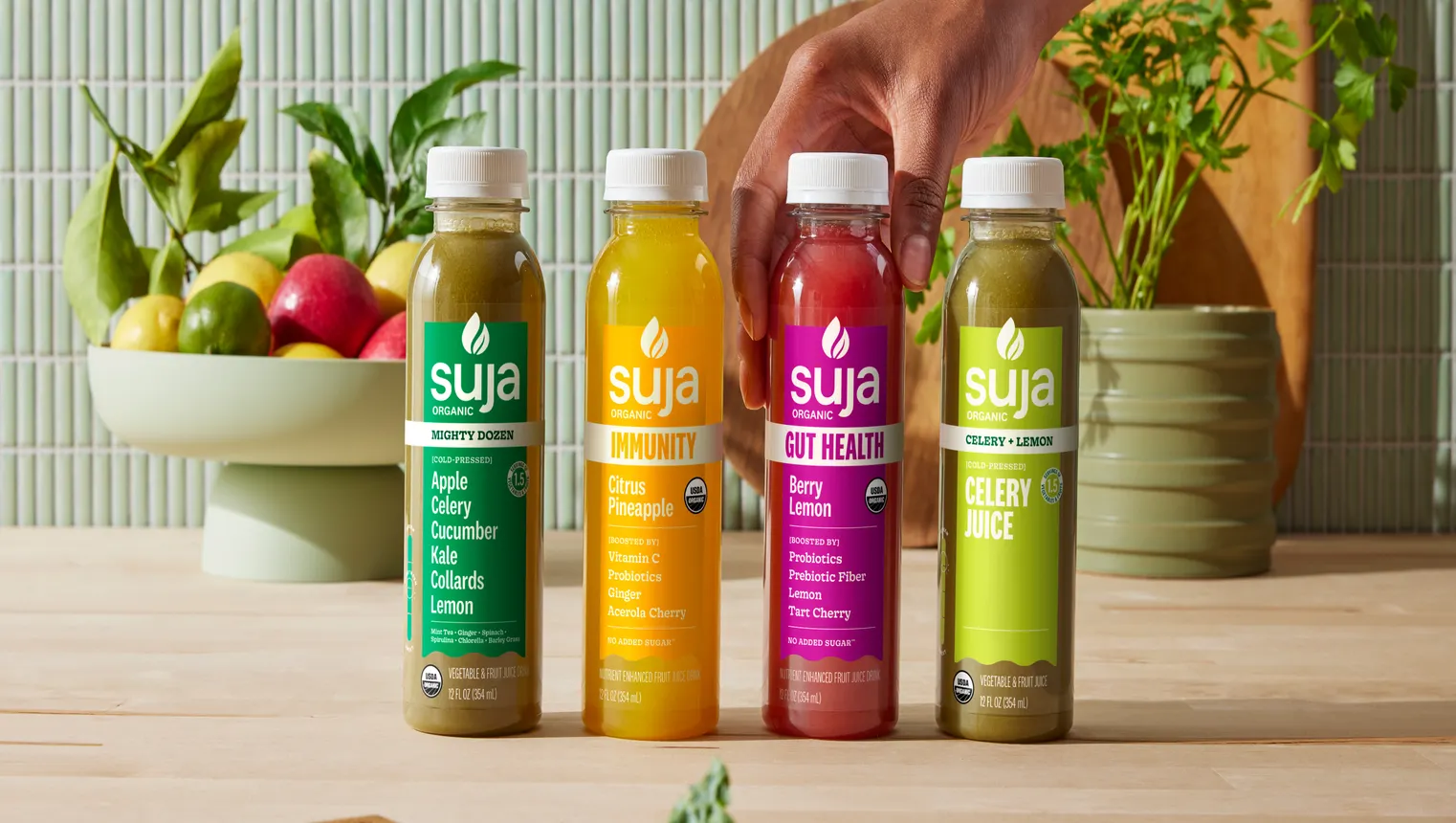
Two of the most high-profile mistakes in recent memory include a pair of PepsiCo brands, both of which caused sales to plunge.
In 2009, PepsiCo’s Tropicana brand spent $35 million designing and communicating changes to its packaging, where the image of an orange with a straw sticking out of it was replaced by a large glass filled with juice.
Loyal consumers wasted little time blasting the new design, with sales plunging 20% in just a few weeks, according to Malu Design, a consulting, design and branding firm. Less than two months later, Tropicana abruptly announced it would go back to the prior packaging.
The campaign cost Tropicana more than $65 million and caused the brand to cede market share to competitors such as Coca-Cola’s Minute Maid, Malu found. PepsiCo has since divested Tropicana.
A year later, the snack and beverage giant’s Frito-Lay division introduced a compostable Sun Chips bag made from biodegradable plant material instead of plastic. While the company’s sustainability mission was well-received, the loud, grumbling noise of the new packaging was a major distraction for consumers who said it reminded them of a jet engine or a lawn mower.
Sun Chips later discontinued the packaging, but with its image still tied to environmental sustainability, the snack maker went to work developing quieter, but still planet-friendly packaging. The new bag debuted in 2011.
The chance to make package design cheaper, more efficient and ultimately successful has created an opportunity for companies such as PV&COHO. The firm has worked with food giants such as PepsiCo, Kraft Heinz, Mars and Nestlé to bring the robust, data-intensive process that has dominated food and beverage product development for decades to packaging.
To do that, PV&COHO not only employs graphic designers, but it also augments its design team with engineers, consumer insight strategists and prototyping specialists who cover everything from structural feasibility and material innovation to behavioral testing and shelf impact.
PV&COHO also has its own equipment that enables it to create physical packaging prototypes within a few hours, helping shave months off the development process timeline and potentially saving companies millions of dollars in the process.
Bisceglia said while there has been a “massive shift in how seriously” companies approach packaging compared to 30 years ago, there remains a noticeable “gap” where some firms treat [packaging] “as an afterthought or a cost to manage, rather than a growth lever.”
“We need to keep pushing the narrative that packaging should be more than just a container,” Bisceglia added. “It's a critical brand touchpoint and a powerful tool.”


